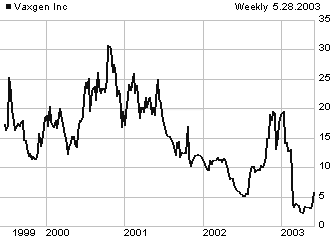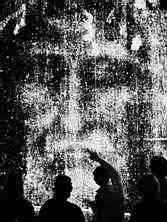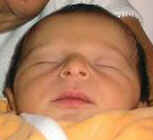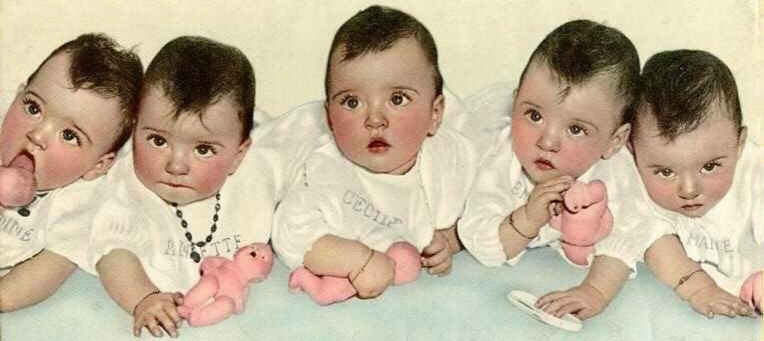Deaths
which occurred on a 28 May:
2002 Napoleon
Beazley, by lethal injection, in Texas, for having, on 19 April
1994, when he was 17, shot twice in the head John Luttig, 63, in order to
steal his Mercedes car, with the complicity of brothers Cedric and Donald
Coleman. steals Luttig's Mercedes car. The execution comes despite international
appeals on Beazley's behalf, because he is Black and was below age 18 at
the time of the crime, and the victim's son J. Michael Luttig, a federal
appeals judge in Virginia, came to the Tyler, Texas, trial and unduly influenced
it, and the jury had no Black on it.
2002 Three yeshiva students,
and a gunman from the Al-Aqsa Martyrs Brigade, who shoots them
in the West Bank enclave settlement of Itamar, near Nablus, in the evening,
and is in turn shot by the settlement's security officer.
2002
Albert Malul, 50, of Jerusalem, by shots fired at the car in which
he was traveling, south of the West Bank settlement of Ofra, coming from
Jerusalem on Road 60 (the Ramallah bypass road), prior to reaching the Burka
junction.
2002 Mildred Wirt Benson, author, under
the pseudonym Carolyn Keene, of 23 of the 30 original Nancy Drew mysteries,
about a beautiful, rich, smart 16-year-old girl who solved crimes. All Benson
got was $125 per book, no royalties from the books (200 million books in
17 languages, including those by those who followed her, under the same
pseudonym), movies, and board games. Benson wrote more than 100 other books,
including the Penny Parker mystery series. Benson was born on 10 July 1905.
2001 At least 12 persons in coup attempt by Central African
Republic poorly paid soldiers against President Ange-Félix Patasse.
The dead include 7 members of the presidential guard. Patasse first won
election in 1993, ending more than a decade of army rule. He won re-election
in 1999 amid opposition claims of vote fraud.
2001 Kelly Coblentz,
16, of neisseria meninigitidis, sophomore at West Branch High School, in
Alliance, Ohio. Coming after the death from the same cause of another student
from the same school on 23 May, this causes a scare and motivates a preventive
mass vaccination.
1998 Phil(ip Edward) Hartman(n), 49, and Brynn
Hartman, 40, his third wife, who, under the influence of alcohol
and cocaine, shoots her husband in the early hours, goes and tells a friend,
who does not believe her, returns home with the friend, locks herself in
a room and shoots herself; in Encino, California. (Phil Hartman's father
died on 30 April 1998). — MORE
1995: 1989 personas en un seísmo en Neftegorsk (isla
rusa de Sajalín). Hubo 1208 supervivientes.
1981 Stefan Wyszynski,
cardenal primado de Polonia.
1980 Rolf
Herman Nevanlinna, Finnish mathematician. His most important
work was on harmonic measure, which he invented in 1936. He also developed
the theory of value distribution named after him.
1977: 164
persons in fire at the Beverly Hills Supper Club in Southgate,
Kentucky.
1972 Duke of Windsor, 77, in Paris. As
Edward VIII, he had abdicated the British throne in 1938 to marry divorcée
Wallis Warfield Simpson.
1968 Cornelis Theodorus Maria Kees
van Dongen, Dutch-born French painter born on 26 January 1877.
— MORE
ON VAN DONGEN AT ART “4” MAY
— LINKS
— Portrait
of a Young Woman — Aux
Folies Bergères — Head
of a Woman — Woman
with a fan — Woman
watching a steeplechase — Le
Coquelicot — Daniel
Khanweiler — Feranate
Olivier — Gypsy
— Indian
Dancer — Prostitute
— Parisienne
— Red
Dancer — Rotterdam
— La
Réussite — The Green Dress
— Torso
1963 Estimated 22'000 in cyclone in Bay of Bengal (India)
1921 Konrad Kiesel, German artist born on 29 November
1846.
1912 Paul Émile Lecoq de Boisbaudran,
químico francés.
1885 Francis John Williamson, British
artist born in 1826.
1843 Noah Webster, 84, lexicographer
(Webster's Dictionary) — WEBSTER ONLINE: Webster's Revised Unabridged
Dictionary (based on the 1913 Merriam-Webster edition): searchable
HTML — A-B:
— C:
— D-E:
— F-H:
— I-L:
— M-O:
— P-Q:
— R:
— S:
— T-W:
— X-Z:
(zipped only) — . Merriam-Webster's
Collegiate Dictionary (current edition) — The
American Heritage Dictionary of the English Language (2000)
1805 Luigi Boccherini, compositor italiano.
1794
Elisabeth-Georgine van Hogenhuyzen, Dutch artist born in 1776.
Condamnés à mort par la Révolution:
^top^
1794 (9 prairial an II):
DEVAUX Pierre François, vivant de ses biens, par
le tribunal révolutionnaire.
LORCET Isaac Julien, notaire, domicilié à St Marceau
(Sarthe), comme Munitionnaire des brigands de la Vendée, par le tribunal
criminel dudit département.
VERDELIN Pierre Jacques César, ex-noble, domicilié
à Cambray (Nord), par le tribunal révolutionnaire de Cambray, comme
ne s’étant pas retiré de ladite ville, place forte d'où il
devait sortir comme ex-noble.
BERTRAND Pierre Louis, 41 ans, confiseur, ex officier
de gobelet du dernier tyran roi, né et domicilié à Paris, comme contre-révolutionnaire,
par le tribunal criminel du département de la Seine..
DELOCRE Charles Joseph Albert Ferdinand, 40 ans,
né à Agnières, demeurant à Arras, marchand, époux de Jugand Gabrielle
Joseph, à Arras
JUGAND Gabrielle Joseph, 40 ans, née à Aire, demeurant
à Arras, épouse de Delocre Charles Joseph Albert Ferdinand, à Arras
Domiciliés dans le département
de la Dordogne, par le tribunal criminel dudit département,
comme réfractaires à la loi:
CAPELLE Pierre, ex charteux, domicilié à Mont-Pont.
— CHERCHOULY Jean, ex curé, domicilié à la Chapelle-Fauché.
— DEREIS Jean, ex curé, domicilié à St Pardoux-de-Mareuil.
Domiciliés dans le département
du Vaucluse:
BERTRAND Gabriel Edouard, membre du comité de surveillance
de Bédouin, canton de Carpentras, comme contre-révolutionnaire, par
le tribunal criminel du Gard..
BEYSSER Joseph, (dit Padelle), domicilié à Avignon,
comme contre-révolutionnaire, par le tribunal criminel dudit département.
DECOR Jacques, cordonnier, domicilié à Crillon, par
le tribunal criminel dudit département comme contre-révolutionnaire.
... domiciliés
à Bedouin, canton de Carpentras:
...
comme conspirateurs,
par le tribunal criminel du département de Vaucluse:
ASTAUD Jean Joseph, propriétaire — FRUCTUS
Michel (dit Coucourdon), meunier, lieutenant de la garde
nationale — FRUTUS François, potier de terre,
commandant de la garde nationale — THOMAS Jean Baptiste
(dit Chicanand), propriétaire — THOMAS Joseph, père
(dit Chicanaud), propriétaire — THOMAS Mélanie,
(dit Belezy), ex-noble — THOMAS Joseph, fils de Joseph,
propriétaire
...
comme contre-révolutionnaires:
... par la commission populaire séante à Orange:
ALLEMAND Jean Baptiste, prêtre insermenté —
ALLEMAND François Nicolas, homme de loi — ALLEMAND
Françoise, ex religieuse insermentée.
... par le tribunal criminel du département de Vaucluse:
BALBANY Joseph (dit Devaubonne), ex-noble, seigneur
de Bédouin.— BELLECOMBE Joseph Vincent Thomas,
propriétaire, membre du comité de la commune de Bedouin. — BERNARD
Joseph, notaire — BERNUSSET Victor,
juge de paix — BONNETY Charles, tuilier, sergent
de la garde nationale de Bédouin — BOUTEILLE Mariette
Marguerite, veuve Thomas (dit Belezy), ex noble — BRANCHE
Jean Joseph, cultivateur — BREMOND Jean Joseph,
propriétaire — BREMOND Jean Louis, fils, propriétaire
— BRUN Mathieu (dit Palliasson) — BRUN
Jean Louis, maréchal ferrant — CARPENTRAS Henri,
propriétaire — CHARBONEL Jean, cordonnier —
CONSTANTIN Antoine, boulanger — CONSTANTIN
Joseph Marc, prêtre, boulanger — COTTON Antoine,
propriétaire — COTTON Jean François, fournier
— COUTANT Jean Esprit, agent national —
DAUBERTE Pierre François, officier municipal —
DECOR Sébastien, tisserand — FAULCON
Joseph Vincent, notaire — FAVAREL Siméon Alexis,
salpêtrier — FLORANT Etienne, cultivateur —
FRUCTUS Sylvestre, fabricant de tuiles, maire —
GERBAUD Grégoire, propriétaire — GERBAUD
Jérôme, propriétaire — GERBAUD Thomas,
propriétaire — GUIBERT Ignace Xavier, prêtre
réfractaire — GUIGUE Xavier, prêtre —
GUITRAND Etienne, serrurier, officier municipal — JOUVE
François, tisserand membres du comité — MARTIN
Marie Thérèse, religieuse assermentée — MENTILLON
Jean, propriétaire — MOLIÈRE André L. Flor.,
ex noble, chevalier du tyran roi, lieutenant colonel d'Auvergne —
CLAPTI Cécile, femme Molière, ex noble— MONIER
Thomas, notaire — MOUTON Suzanne, femme
Bernard — NOUVENE Dominique, salpêtrier, officier
municipal — NOUVENE Denis, membre du comité,
et propriétaire — PASCHAL Antoine, agent de
ci-devant noble — PAYEN Joseph Thomas — PELLET François,
cultivateur — PEYRE Joseph Marcellin — PORTAIL César,
tisserand — RAYMOND Eléonore Françoise, veuve
Balbany — ROUSSEAU Thomas, potier de terre et
membre du comité — ROUSSEAU Pierre, meunier,
commandant en second de la garde nationale, président de la société
populaire — ROUSSEAU Jean, potier de terre,
capitaine de la garde nationale — ROUSSEAU Joseph,
potier de terre — TALLENE Basile, chirurgien
— THOMAS Marie, fils d'Antoine — TRIBOULET
Jean Joseph, propriétaire et membre du comité — VENDRAN
Jean Baptiste, propriétaire et membre du comité — VIAU
Michel, prêtre réfractaire — VIAU Roman,
potier de terre — VIAU Etienne, propriétaire.
Par le tribunal révolutionnaire
de Paris:
CHEVALIER Françoise, ouvrière en linge, 28 ans, née
et domiciliée à Besançon (Doubs), comme convaincue d'avoir conspiré
contre le Peuple français, en tenant des propos contre-révolutionnaires.
FERON Guillaume, 45 ans, journalier, né à Arnouville
(Seine et Oise), domicilié à à St Martin-des-Champs (Seine et Oise),
comme convaincu d’avoir insulté, outragé les autorités légitimes,
en refusant d’obéir aux réquisitions.
FERON Marie Adélaïde, femme Rageot, 40 ans, née à
Armouville (Seine et Oise), couturière, domiciliée à St Martin-des-Champs
(Seine et Oise), comme convaincue d’avoir outragé les administration
du département de Seine et Oise, et du District de Montfort-le-Brutus.
LETELLIER Nicolas, vigneron et tuilier, 36 ans, né
à Septeuil (Seine et Oise), membre du comité de surveillance, domicilié
et agent national de la commune de St Martin-des-Champs (Seine et
Oise), comme contre-révolutionnaire, ayant insulté et menacé les administrateurs
de son département.
PETIT Jean, tonnelier et maire d'Orsmoy, 49 ans,
né et domicilié à Osmoy (Seine et Oise), comme complice d'une conspiration
tendante à empêcher la circulation des transports des subsistances
en réquisition pour le département de la Seine et Oise.
RAGEOT André, 38 ans, natif de Bresse, tailleur,
et membre de la commune de St Martin, domicilié à St Martin-des-Champs
(Seine et Oise), comme complice d’une conspiration tendante à empêcher
la circulation des transports des subsistances en réquisition, par
le département de la Seine et Oise.
SAINTANAX André, élève en chirurgie, employé à l’hôpital
militaire de Choisy-sur-Seine, 22 ans, natif de Bordeaux (Gironde),
domicilié à Choisy-sur-Seine, comme complice de la fraction de l’étranger,
et de l’assassinat du représentant du peuple Collot
d’Herbois ; il a été conduit à l’échafaud avec une chemise rouge.
SIMON Felix, domestique, cloutier, 61 ans, né et
domicilié à Rossureux (Doubs), comme conspirateur, ayant dit que l'on
avait mal fait de détruire les seigneurs, mais que dans quelques temps
ils seraient rétablis; que les prêtre qui avaient accepté la constitution
française, n'étaient pas plus que lui, que les patriotes étaient des
gueux, et que les choses changeraient.
VILLEMIN Claude Joseph, journalier, 26 ans, né et
domicilié à Guyans-en-Venne (Doubs), comme conspirateur ayant attenté
à la sûreté des personnes et des propriétaires.
BAILLOT Firmin, 36 ans, né à Lironville (Meurthe),
rapeur de tabac, domicilié à Paris, comme conspirateur
DUMAZET Sylvain, 25 ans, né à Argenton (Orne), ci-devant
ouvrier verrier, colporteur, comme convaincu d'avoir conspiré contre
le peuple français, en tenant des propos contre-révolutionnaires.
... comme contre-révolutionnaires:
FENAUX Pierre François, charretier, 40 ans, né à
Salincourt (Eure), domicilié à Rosay (Seine et Marne).
LEGER Claude, meunier et cultivateur, 49 ans, né
à Villemur (Seine et Oise), domicilié à Rosay (Seine et Marne)
DUHAMEL Eloi, 54 ans, né à Ris (Seine et Marne),
tuilier et agent national, domicilié à à St Martin-des-Champs (Seine
et Oise).
OLIVIER Martin, vigneron, et maire de sa commune,
58 ans, né et domicilié à St Martin-des-Champs (Seine
et Oise).. |
1756
Lt. Coulon de Jumonville, 9 other French and 1 American soldier, in
the first engagement of the French and Indian War
^top^
In the first engagement of the French and Indian War, a Virginia militia
under Lieutenant Colonel George Washington defeated a French reconnaissance
party in southwestern Pennsylvania. The French and Indian War was
the last and most important of a series of colonial conflicts between
the British and the American colonists on one side, and the French
and their broad network of Native-American allies on the other. Actually
part of a larger global conflict known as the Seven Years’ War, the
French and Indian War officially began on 15 May 1756, when Britain
declared war on France. Thirteen days later, the twenty-two-year-old
George Washington struck the first blow of the war in North America,
defeating a French force en route from Fort Duqesne. The French commander,
Lieutenant Joseph Coulon de Jumonville, was slain, along with nine
of his men. The rest of his force was captured. Over the next seven
years of the war, Washington continued to lead the Virginia militia
in the defense of their colony’s western frontier colonies.
On 10 February 1763, the French
and Indian War ended with the signing of the Treaty of Paris by France,
Great Britain, and Spain. In the treaty, France lost all claims to
Canada and gave Louisiana to Spain, while Britain received Spanish
Florida, Upper Canada, and various French holdings overseas. The treaty
ensured the colonial and maritime supremacy of Britain, and strengthened
the thirteen American colonies by removing their European rivals to
the north and the south. Fifteen years later, French bitterness over
the loss of most of their colonial empire to Britain contributed to
their intervention in the American Revolution on the side of the Patriots,
even though the Americans were led by France’s old enemy George Washington.
In the first engagement of the
French and Indian War, a Virginia militia under 22-year-old Lieutenant
Colonel George Washington defeats a French reconnaissance party in
southwestern Pennsylvania. In a surprise attack, the Virginians killed
10 French soldiers from Fort Duquesne, including the French commander,
Coulon de Jumonville, and took 21 prisoners. Only one of Washington's
men was killed. The French and Indian War was the last and most important
of a series of colonial conflicts between the British and the American
colonists on one side, and the French and their broad network of Native
American allies on the other. Fighting began in the spring of 1754,
but Britain and France did not officially declare war against each
other until May 1756 and the outbreak of the Seven Years War in Europe.
In November 1752, at the age of 20, George Washington was appointed
adjutant in the Virginia colonial militia, which involved the inspection,
mustering, and regulation of various militia companies. In November
1753, he first gained public notice when he volunteered to carry a
message from Virginia Governor Robert Dinwiddie to the French moving
into the Ohio Valley, warning them to leave the territory, which was
claimed by the British crown. Washington succeeded in the perilous
wilderness journey and brought back an alarming message: The French
intended to stay.
In 1754, Dinwiddie
appointed Washington a lieutenant colonel and sent him out with 160
men to reinforce a colonial post at what is now Pittsburgh, Pennsylvania.
Before Washington could reach it, however, it was given up without
bloodshed to the French, who renamed it Fort Duquesne. Washington
moved within about 60 km of the French position and set about building
a new post at Great Meadows, which he named Fort Necessity. From this
base, he ambushed an advance detachment of about 30 French, striking
the first blow of the French and Indian War. For the victory, Washington
was appointed a full colonel and reinforced with several hundred Virginia
and North Carolina troops. On 03 July, the French descended on
Fort Necessity with their full force, and after an all-day fight Washington
surrendered to their superior numbers. The disarmed colonials were
allowed to march back to Virginia, and Washington was hailed as a
hero despite his surrender of the fort. The story of the campaign
was written up in a London gazette, and Washington was quoted as saying,
"I have heard the bullets whistle; and believe me, there is something
charming in the sound." Reading this, King George II remarked, "He
would not say so if he had been used to hear many."
In October 1754, Washington resigned his commission in protest of
the British underpayment of colonial offices and policy of making
them subordinate to all British officers, regardless of rank. In early
1755, however, British General Edward Braddock and his army arrived
to Virginia, and Washington agreed to serve as Braddock's personal
aide-de-camp, with the courtesy title of colonel. The subsequent expedition
against Fort Duquesne was a disaster, but Washington fought bravely
and succeeded in bringing the survivors back after Braddock and 1000
others were killed. With the western frontier of Virginia now dangerously
exposed, Governor Dinwiddie appointed Washington commander in chief
of all Virginia forces in August 1755. During the next three years,
Washington struggled with the problems of frontier defense but participated
in no major engagements until he was put in command of a Virginia
regiment participating in a large British campaign against Fort Duquesne
in 1758. The French burned and abandoned the fort before the British
and Americans arrived, and Fort Pitt was raised on its site. With
Virginia's strategic objective attained, Washington resigned his commission
with the honorary rank of brigadier general. He returned to a planter's
life and took a seat in Virginia's House of Burgesses. The French
and Indian War raged on elsewhere in North America for several years.
With the signing of the Treaty of Paris in February 1763, France lost
all claims to the mainland of North America east of the Mississippi
and gave up Louisiana, including New Orleans, to Spain. Fifteen years
later, French bitterness over the loss of their North American empire
contributed to their intervention in the US War of Independence on
the side of the Patriots, despite the fact that the Patriots were
led by one of France's old enemies, George Washington. |
1755 Frans Xaver Hendrik Verbeeck, Flemish artist born
on 21 February 1686.
1749 Pierre Hubert Subleyras,
French painter born in 1699, specialized in Historical
Subjects. — MORE
ON SUBLEYRAS AT ART “4” MAY
— LINKS
— Mass
of St Basil — Le
Miracle de Saint Benoit [il ressucite un bébé] —
Mass
of St Basil . — Portrait
of a Man — The
Studio of the Painter — Le
Sacre de Louis XV — Pope
Benedict XIV
1748 Ignaz Stern Stella, German
artist born in 1680.
1723 Willem Grasdorp, Dutch
artist born on 15 October 1678. |
 On
a 28 May:
On
a 28 May:  1898
1898


 Three of the sisters married: Annette had three sons; Marie had two daughters;
and Cécile had four sons and one daughter. Only Cécile had a multiple birth:
twin sons, one of whom died at the age of 15 months. Émilie died of an epileptic
seizure on 06 August 1954, at Sainte-Agathe-des-Monts, Que.; Marie died
in Montreal on 27 February 1970.
Three of the sisters married: Annette had three sons; Marie had two daughters;
and Cécile had four sons and one daughter. Only Cécile had a multiple birth:
twin sons, one of whom died at the age of 15 months. Émilie died of an epileptic
seizure on 06 August 1954, at Sainte-Agathe-des-Monts, Que.; Marie died
in Montreal on 27 February 1970.